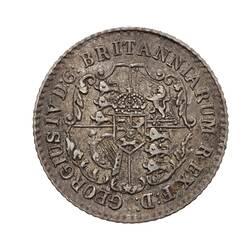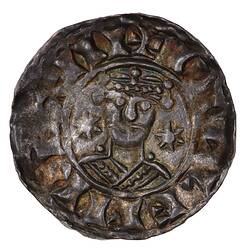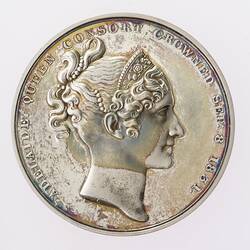Summary
1/16 Dollar, Issued by, British West Indies and Mauritius, 1820.
Anchor Money series
Minted at Royal Mint, London.
Obverse Description
At centre, an ornate shield bearing the arms of King George IV; at centre, the crowned shield of Hanover containing the two lions passant guardant of Hannover, the lion rampant within a semy of hearts of Luneburg and the horse running to the left of Westphalia, quartered around, in I and IV, the three lions passant guardant of England, in II, the lion rampant within a tressure of Scotland, in III, the harp of Ireland; around, GEORGIUS IV D:G: BRITANNIARUM REX F:D:
Reverse Description
At centre, anchor surmounted by crown; at both sides, XVI; around; COLONIAR: BRITAN: MONET: 1820
Edge Description
Milled
Significance
From 1817 the British government turned its attention to the perceived need for a colonial coinage based on the Spanish dollar. The colonial coinage, generally known as Anchor Money from the anchor featured on the reverse, was developed. The coins were struck on the Spanish dollar silver, .892 fine. The first issue, dated 1820, was sent to Mauritius (in the denominations 1/4, 1/8 and 1/16 dollar). A second issue , dated 1822 was sent both to Mauritius (with the additional denomination 1/2 dollar) and the British West Indies (1/2 dollars not sent at that time). The system was not a success with both areas eventually moving to the sterling system. In 1826, when Mauritius went over to sterling, remaining anchor money 1/2 dollar pieces were transferred to the British West Indies, these all bore the date 1822. Dies were prepared at the Royal Mint bearing the date 1821 but, with the exception of a single 1/2 dollar now in the British Museum collection, the dates on the dies were modified to read 1822 (on some coins the modification of the dies show up as an overdate, 1822 over 1821. In addition to the unique 1821 piece, Pridmore also records 1820 denominations in the name of George III, it is uncertain what his source for these pieces was, the Royal Mint does not hold examples nor dies for such an issue.
More Information
-
Collecting Areas
-
Acquisition Information
Donation from Mr Robert Edwards - Museum of Victoria, 24 May 1984
-
Date Issued
1820 AD
-
Issued By
-
Mint
-
artist
-
Denomination
-
Series
-
Material
silver
-
Axis
12
-
Classification
-
Category
-
Discipline
-
Type of item
-
Dimensions
16 mm (Outside Diameter), 1.67 g (Weight)
-
Shape
Round
-
References
KM#1 Pridmore, Fred., Coins of the British Commonwealth of Nations, part 3 West Indies, p. 267-271 Remick, J. British Commonwealth Coins, p. 10 - 12
[Book] Bruce, Colin R. 2006. Standard Catalogue of World Coins 1801 - 1900.
[Book] Remick, Jerome. 1971. British Commonwealth Coins.
-
Keywords







